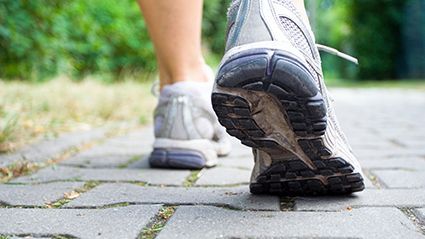WEDNESDAY, March 17, 2021 (HealthDay News) — If you saunter and shuffle instead of scurry when you walk, you are at higher risk of severe illness and death from COVID-19, British researchers warn.
For the study, the investigators analyzed data from more than 412,000 middle-aged Britons and found that among those whose weight was normal, slow walkers were more than twice as likely to develop severe COVID-19 and 3.75 times more likely to die of it than those who keep a brisk pace.
“We know already that obesity and frailty are key risk factors for COVID-19 outcomes. This is the first study to show that slow walkers have a much higher risk of contracting severe COVID-19 outcomes, irrespective of their weight,” said lead researcher Thomas Yates, who studies physical activity, sedentary behavior and health at the University of Leicester.
“With the pandemic continuing to put unprecedented strain on health care services and communities, identifying individuals at greatest risk and taking preventative measures to protect them is crucial,” Yates added in a university news release.
The new research was recently published in the International Journal of Obesity.
Yates’ team also reported that slow walkers with a normal weight were at greater risk for severe illness and death from COVID-19 than fast walkers who were obese. And the risk was uniformly high whether slow walkers were obese or their weight was normal.
Fast walkers have generally been shown to have good heart health, making them more resilient to stressors, including viruses, Yates pointed out.
“But,” he added, “this hypothesis has not yet been established for infectious disease.”
Large database studies have linked obesity and fragility with COVID-19 outcomes, but routine clinical databases lack data on measures of physical function or fitness, Yates said.
“It is my view that ongoing public health and research surveillance studies should consider incorporating simple measures of physical fitness, such as self-reported walking pace in addition to BMI [a measure of body fat based on height and weight], as potential risk predictors of COVID-19 outcomes that could ultimately enable better prevention methods that save lives,” he concluded.
More information
The U.S. Centers for Disease Control and Prevention has more on people at increased risk for severe COVID-19.
SOURCE: University of Leicester, news release, March 16, 2021
Copyright © 2025 HealthDay. All rights reserved.

